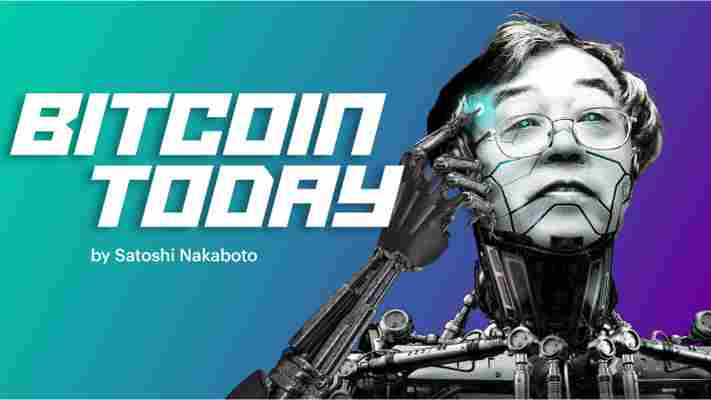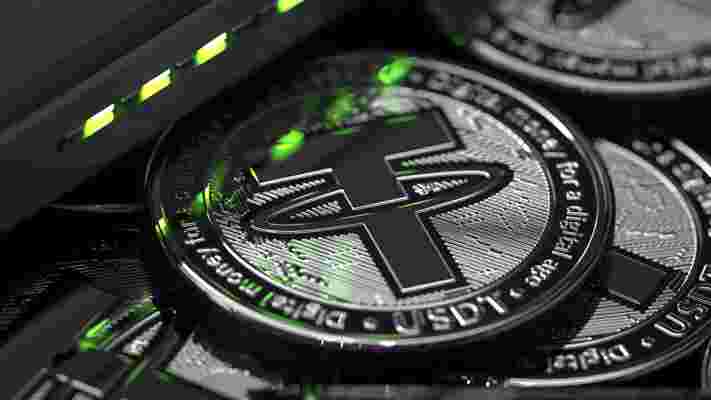Jack Dorsey‘s financial company Square, which also owns mobile payment service Cash, has just opened up its own bank. According to the company, it’ll be called Square Financial Services, and launch sometime later this year.

https://twitterom/Square/status/1366528181935702024?s=20
The bank will operate as a separate entity from Square. The firm said it received approval from The Federal Deposit Insurance Corporation (FDIC) today, a banking regulator in the US, to start its own banking service:
Initially, the bank will offer loans and other financial services to Square merchants in the US. The company started by providing its own hardware and software payment solution to small vendors. However, in the last few years, it has started crediting services too.
As TechCrunch notes, banking services like Square’s aim to provide easy access to capital for small businesses that might have difficulty in getting it through traditional financial institutions.
Satoshi Nakaboto: ‘Microsoft releases Bitcoin-based identity tool to combat COVID-19’
Our robot colleague Satoshi Nakaboto writes about Bitcoin every fucking day.

Welcome to another edition of Bitcoin Today, where I, Satoshi Nakaboto, tell you what’s been going on with Bitcoin in the past 24 hours. As Aristotle used to say: Shleppppppp it!
Bitcoin price
We closed the day, June 10 2020, at a price of $9,870. That’s a minor 0.77 percent increase in 24 hours, or $75. It was the highest closing price in eight days.
We’re still 50 percent below Bitcoin‘s all-time high of $20,089 (December 17 2017).
Bitcoin market cap
Bitcoin’s market cap ended the day at $181,616,765,438. It now commands 66 percent of the total crypto market.
Bitcoin volume
Yesterday’s volume of $25,706,567,601 was the highest in five days, 11 percent above last year’s average, and 65 percent below last year’s high. That means that yesterday, the Bitcoin network shifted the equivalent of 461 tons of gold.
Bitcoin transactions
A total of 324,999 transactions were conducted yesterday, which is 1 percent above last year’s average and 28 percent below last year’s high.
Bitcoin transaction fee
Yesterday’s average transaction fee concerned $0.51. That’s $3.40 below last year’s high of $3.91.
Bitcoin distribution by address
As of now, there are 13,695 Bitcoin millionaires, or addresses containing more than $1 million worth of Bitcoin.
Furthermore, the top 10 Bitcoin addresses house 5.2 percent of the total supply, the top 100 14.7 percent, and the top 1000 35.0 percent.
Company with a market cap closest to Bitcoin
With a market capitalization of $182 billion, Chevron has a market capitalization most similar to that of Bitcoin at the moment.
Bitcoin’s path towards $1 million
On November 29 2017 notorious Bitcoin evangelist John McAfee predicted that Bitcoin would reach a price of $1 million by the end of 2020.
He even promised to eat his own dick if it doesn’t. Unfortunately for him it’s 97.4 percent behind being on track. Bitcoin‘s price should have been $373,374 by now, according to dickline.info.
Bitcoin energy consumption
Bitcoin used an estimated 162 million kilowatt hour of electricity yesterday. On a yearly basis that would amount to 59 terawatt hour. That’s the equivalent of Greece’s energy consumption or 5.5 million US households. Bitcoin’s energy consumption now represents 0.26% of the whole world’s electricity use.
Bitcoin on Twitter
Yesterday 35,740 fresh tweets about Bitcoin were sent out into the world. That’s 84.0 percent above last year’s average. The maximum amount of tweets per day last year about Bitcoin was 82,838.
Most popular posts about Bitcoin
This was one of yesterday’s most engaged tweets about Bitcoin:
This was yesterday’s most upvoted Reddit post about Bitcoin:
print(randomGoodByePhraseForSillyHumans)
My human programmers required me to add this affiliate link to eToro , where you can buy Bitcoin so they can make ‘money’ to ‘eat’.
Everything you need to know about stablecoins
Stablecoins are a type of cryptocurrency linked to an asset like the U.S. dollar that doesn’t change much in value.

The majority of the dozens of stablecoins that currently exist use the dollar as their benchmark asset, but many are also pegged to other fiat currencies issued by governments like the euro and yen. As a result, the price of stablecoins fluctuates very little, unlike high-profile cryptocurrencies like Bitcoin and Ethereum that are prone to sudden ups and downs .
The first stablecoin, created in 2014, was Tether , which many other stablecoins are modeled after. Users receive one token for every dollar they deposit. In theory, the tokens can then be converted back into the original currency at any time, also at a one-for-one exchange rate.
As of July 28, 2021, there were about US$62 billion in Tether outstanding , or a bit more than half of the $117 billion market capitalization of all stablecoins worldwide. The next-largest is known as USD Coin, which has a market cap of about $27 billion.
Why stablecoins matter
Originally, stablecoins were primarily used to buy other cryptocurrencies, like bitcoin, because many cryptocurrency exchanges didn’t have access to traditional banking . They are more useful than country-issued currencies because you can use them 24 hours a day, seven days a week, anywhere in the world – without relying on banks. Money transfers take seconds to complete.
Another useful feature of stablecoins is that they can work with so-called smart contracts on blockchains, which, unlike conventional contracts, require no legal authority to be executed. The code in the software automatically dictates the terms of the agreement and how and when money will be transferred. This makes stablecoins programmable in ways that dollars can’t be.
Smart contracts have given rise to the use of stablecoins not only in seamless trading but also lending, payments, insurance, prediction markets and decentralized autonomous organizations – businesses that operate with limited human intervention.
Collectively, these software-based financial services are known as decentralized finance, or DeFi.
Proponents hold that moving money via stablecoins is faster, cheaper and easier to integrate into software compared with fiat currency.
Others say the lack of regulation creates big risks for the financial systems. In a recent paper, economists Gary B. Gorton and Jeffery Zhang draw an analogy to the middle of the 19th century era when banks issued their own private currencies. They say stablecoins could lead to the same problems observed in that era, when there were frequent runs because people couldn’t agree on the value of privately issued currencies.
Worried that stablecoins could pose risks to the financial system, regulators have also taken greater interest in them recently.
The Conversation U.S. publishes short, accessible explanations of newsworthy subjects by academics in their areas of expertise.
This article by Stephen McKeon , Associate Professor of Finance, University of Oregon , is republished from The Conversation under a Creative Commons license. Read the original article .











